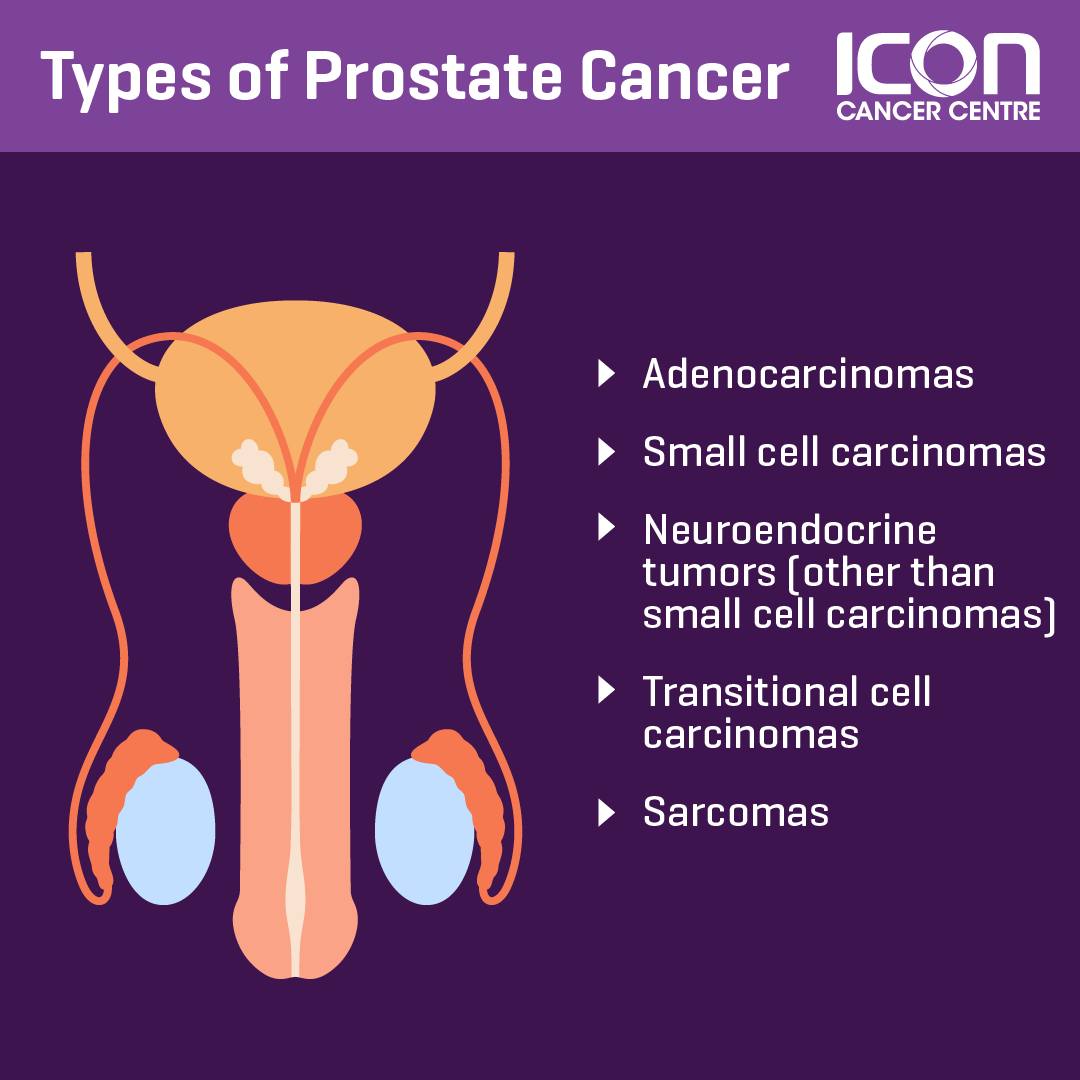Prostate cancer is a serious condition that affects men, typically those over the age of 50. It is important to understand that not all types of prostate cancer are the same, and they can differ in terms of their prognosis and treatment options.
In this article, we will discuss the different types of prostate cancer, including adenocarcinomas, small cell carcinomas, neuroendocrine tumours (other than small cell carcinomas), transitional cell carcinomas, and sarcomas.

Adenocarcinomas
Adenocarcinomas are the most common type of prostate cancer, accounting for approximately 95% of all cases. They arise in the glandular cells that produce prostate fluid and are slow-growing tumours that may not cause symptoms for many years. Adenocarcinomas usually respond well to treatment, especially when detected early.
Small Cell Carcinomas
Small cell carcinomas are a rare and aggressive form of prostate cancer that accounts for only about 1% of all cases. They develop from the neuroendocrine cells that produce hormones and neurotransmitters. Small cell carcinomas are fast-growing and tend to spread quickly to other parts of the body, making them difficult to treat.
Neuroendocrine Tumours (Other Than Small Cell Carcinomas)
Neuroendocrine tumors are another rare type of prostate cancer. They develop from the same cells as small cell carcinomas, but they grow more slowly and tend to be less aggressive. They can also secrete hormones that cause symptoms such as flushing, diarrhea, and wheezing.
Transitional Cell Carcinomas
Transitional cell carcinomas are a rare type of prostate cancer that develops from the cells that line the urinary bladder. These tumors can extend into the prostate gland and may be difficult to distinguish from adenocarcinomas. Transitional cell carcinomas tend to be more aggressive than adenocarcinomas, and treatment options may be limited.
Sarcomas
Sarcomas are a rare type of prostate cancer that develops from the connective tissue cells in the prostate gland. They tend to grow more quickly than adenocarcinomas, but they are still relatively uncommon. Sarcomas may be difficult to diagnose, and treatment options may be limited.
Treatment Options
Treatment options for prostate cancer vary depending on the type and stage of cancer. It is also dependent on the overall health of the patient. For adenocarcinomas, treatment options may include surgery, radiation therapy, hormone therapy, and chemotherapy. Doctors may treat small cell carcinomas with a combination of chemotherapy and radiation therapy. They may also use hormone therapy, chemotherapy, or targeted therapy to treat neuroendocrine tumors. Transitional cell carcinomas may be more difficult to treat, but options may include surgery, radiation therapy, or chemotherapy. Sarcomas are rare, and treatment options may be limited, but surgery and radiation therapy may be used in some cases. Your doctor can help determine the best treatment plan for your specific situation. It is important to discuss all options and potential side effects with your healthcare team to make an informed decision about your care.
In conclusion, understanding the different types of prostate cancer is important. It will help determine the appropriate treatment plan and for predicting the prognosis of the disease. Adenocarcinomas are the most common type of prostate cancer and tend to be slow-growing, while small cell carcinomas are rare and aggressive. Neuroendocrine tumors, transitional cell carcinomas, and sarcomas are all relatively uncommon but may require different treatment approaches. If you are experiencing symptoms such as difficulty urinating, blood in the urine or semen, or pain in the lower back, hips, or thighs, it is important to speak with your doctor to determine if further evaluation is needed. Early detection and treatment of prostate cancer can greatly improve the chances of a positive outcome.














